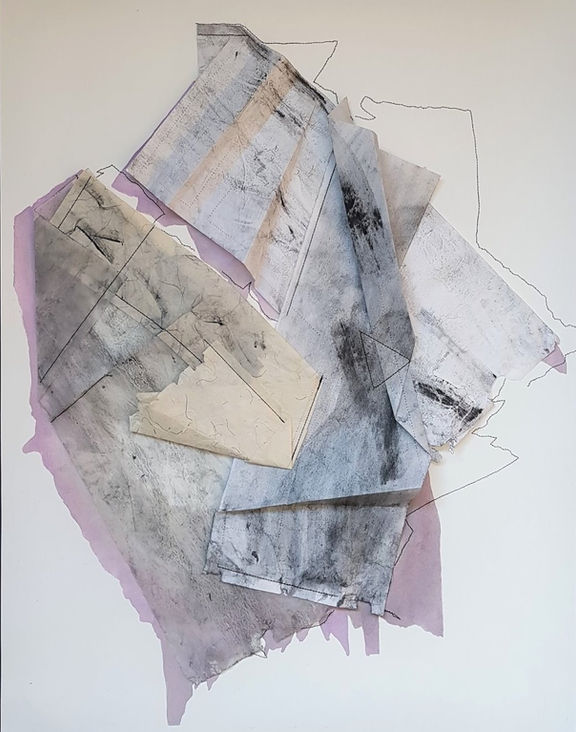Honouring my grandmother - whilst escaping her legacy.
This body of work was begun after participating in Processions 2018 - in the centenary year of women's suffrage I got to thinking how my life differs from that of my grandmothers who were the first generation of women to achieve the right to vote. It occurred to me that many of my practical skills, those I utilize every day, were taught to me by them. My maternal grandmother lived through two world wars and survived her coal miner husband by 20 years.
Like many women of her generation, she did not work after marriage. Her life was defined by domestic skills which we would now describe as 'chores'. She taught us to use a sewing machine, hand embroidery, knitting, baking and lots of other 'crafts' to pass her time with us.
These skills led me to a successful first career in fashion design. They are now providing the basis for further investigations into form and materials in my artwork.
-
The project's initial jumping off points were some of my grandmother's sayings - "make do and mend", "housework is never finished", "you can't beat a good crisp fold", and "you can never completely get rid of the coal-dust".
-
An important aspect to it is working with limited and economical resources. These working class women knew the value of money, how not to waste it and how to re-cycle - before it became a buzz word for our generation.
-
Moreover, I intend to try to make most of this artwork in the domestic environment, not in a studio, and not with overly technical materials. I am starting with scissors, paper, pencils and paint, threads, textiles and discarded domestic materials.
-
A Grain of Dirt ....Begat the Pearl - Letter to my Grandmother.
Dyptich of paper, card & stitched thread.
The imagery references vernacular and super modern architecture. It symbolizes my moving from the small town to the city.
Some of my first memories of my maternal grandmother are of laundry days, coal-dust on shirt collars and cuffs, white cotton bedsheets on the line. Her iron was not electric (like my mother's), it was heated on a black-leaded kitchen range, used for all the cooking duties as well as heating the water.
Linear Process 1 and Linear Process 2 - Process 1 incorporates a paper bonded to linen fabric, painted, folded and stitched . Methodology started with a pattern shape echoing a tailor's block silhouette for paper pattern making, but also the folding and stitching process for pleated garments. Stitch lines on the linen paper are drawn onto the ground mounting board. They transcend the bounding paper, returning to the object. Process 2 involves a rationalisation of the object and time passing over it - returning the observed object back to 2D in much the same way as fashion illustration functions.
Same Place, Different Time - Made from papers of varying absorbency which were stained with paint and hung on the line to dry. Folded and stitched together then observed in relation to light and shadow. At one point in time the shadows were painted onto the ground paper whilst at a different time the shadow was stitched as an outline silhouette. The work represents a manifestation that we are never standing still, we are always looking at the past as well as the present, whilst thinking about the future.










